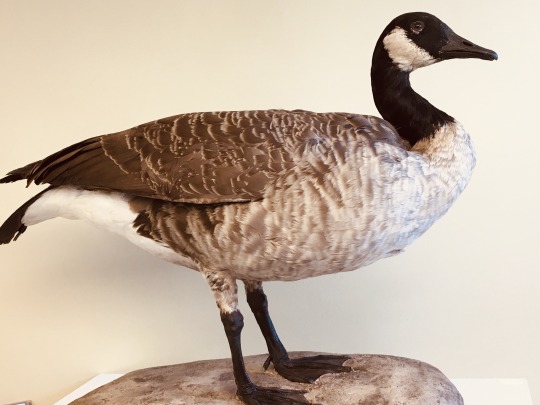
When I think of September and waterfowl, my first thoughts go to the Canada Goose (notice I did not say Canadian Goose which is actually an incorrect name of the bird – there are of course “Canadian Canada Geese”). Nevertheless, my thoughts go to the “American Canada Goose” which seems to be everywhere near water come early fall, and the sounds of them honking puts a little flutter in those Pennsylvanians who hunt. September 1 was the first day of the resident Goose season which runs through September 25th.
Eighty years ago, Canada Geese almost never spent the summer in Pennsylvania. W.E. Clyde Todd, the first curator in the Section of Birds at the Carnegie Museum, kept meticulous records of the comings and goings of many birds in Western Pennsylvania. He has the distinction of the longest tenure of any employee at the museum, having started as a field collector in 1898 and retired and became emeritus curator in 1944. Even after retiring, he continued to come to the museum almost daily until his death in 1969. Mr. Todd, who lived most of his life in Beaver, published the landmark book Birds of Western Pennsylvania in 1940. Several paragraphs in the chapter on the Canada Goose mention early arrivals of the species from the north where they spent the summer as well as late migration to the north where they bred after having spent the winter roaming Pennsylvania fields and waterways. He mentions in the account that the first breeding of American Canada Goose did not occur until 1937 when a few pinioned geese released a few years earlier were successful in breeding in the state.
Today the Canada Goose is almost TOO prevalent for many residents. County and state parks, farm ponds, golf courses, and lawns adjacent to the three rivers seem to be very littered with “fertilizer” which prevents people from running barefoot on the lawns. There are actually professional Geese Police who use Border Collies to chase the geese away from unwanted areas, especially those where lethal means cannot be used. Loud noises have also been used, but as soon as the noises cease or the Border Collies leave, the geese return to foul the lawns and make the water “foul” also. Goose droppings contribute to over fertilization of ponds and lakes causing algal blooms which can be harmful to native fish, invertebrates, and the natural ecosystems of our waterways
Hunting is the only guaranteed method of keeping the resident Canada Goose population in check, of course only in areas where hunting is safe and legal. Hunting can reduce the negative impacts of a species that was not historically a year-round resident. In areas where the practice is safe, legal, and well-regulated, hunting can help to restore ecosystems, reduce local nuisances, provide nutritious food, and get people outdoors! Although the nuisance goose season has liberal bag limits, populations of the birds continue to increase.
Goose recipes can be found on the web using a simple Google Search. There are those who love the taste of a well-prepared bird, and those who think the meat is unfit for human consumption. Make a friend with a goose hunter and you can decide yourself.
Biography of Mr. Todd: https://sora.unm.edu/sites/default/files/journals/auk/v087n04/p0635-p0649.pdf
Book review: https://sora.unm.edu/sites/default/files/journals/auk/v057n04/p0579-p0595.pdf
Canada Goose sounds: https://www.allaboutbirds.org/guide/Canada_Goose/sounds
Stephen Rogers is Collection Manager in the Section of Birds at Carnegie Museum of Natural History. Museum employees are encouraged to blog about their unique experiences and knowledge gained from working at the museum.
